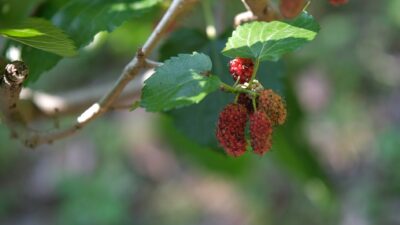The way you plant your organic garden has a big impact on how well your crops grow. Using the right techniques ensures your plants are healthy, productive, and free from synthetic chemicals. Organic gardening is about working with nature, not against it, and smart planting methods can make all the difference. This guide covers essential organic planting techniques to help beginners grow thriving crops. For more organic gardening tips, check out For Organic Life.
Spacing Plants for Optimal Growth
Proper spacing is critical for healthy plants. When plants are too close, they compete for light, water, and nutrients, leading to weak growth or disease. Overcrowding also reduces air circulation, which can cause fungal issues. On the other hand, spacing too widely wastes valuable garden space.
Check seed packets or plant labels for spacing guidelines. For example, tomatoes need 18–24 inches between plants, while lettuce can be as close as 6–8 inches. In small gardens, use square-foot gardening to maximize space—divide your bed into 1-foot squares and plant according to each crop’s needs.
When planting, measure distances with a ruler or string for accuracy. For raised beds or containers, group plants with similar needs together but leave enough room for roots to spread. Proper spacing promotes strong plants and higher yields.
Rotating Crops to Maintain Soil Fertility
Crop rotation is an organic technique that involves changing where you plant crops each season to keep soil healthy. Growing the same crop in the same spot year after year depletes specific nutrients and attracts pests. Rotation prevents these issues and maintains soil fertility.
A simple rotation plan is to group crops by family and move them to a new spot each year. For example:
- Year 1: Plant tomatoes (nightshade family) in Bed A, lettuce (aster family) in Bed B.
- Year 2: Switch to lettuce in Bed A, beans (legume family) in Bed B.
- Year 3: Plant beans in Bed A, tomatoes in Bed B.
Legumes like beans add nitrogen to the soil, benefiting crops that follow. Avoid planting related crops (like tomatoes and peppers) in the same spot consecutively. Keep a garden journal to track rotations. This method reduces pest buildup and keeps your soil nutrient-rich.
Mulching to Retain Moisture and Reduce Weeds
Mulching is a must for organic gardens. A layer of organic material, like straw, wood chips, or grass clippings, covers the soil around plants. Mulch retains moisture, reduces weeds, and regulates soil temperature, all of which help crops thrive.
Apply a 2–3 inch layer of mulch around plants, leaving a small gap near stems to prevent rot. Replenish mulch as it breaks down—it also adds organic matter to the soil over time. For example, straw is great for vegetables, while shredded bark works well for herbs.
Mulching saves time on weeding and watering, especially in hot climates. It also protects roots from temperature swings. Avoid synthetic mulches like plastic, as they don’t decompose or benefit the soil. Check local garden centers for organic mulch options.
Organic Fertilization for Nutrient-Rich Soil
Organic gardens rely on natural fertilizers to feed plants. Compost, aged manure, and worm castings are excellent choices. These materials release nutrients slowly, supporting long-term plant health without harming soil microbes.
Start by mixing compost into your soil before planting—about 1–2 inches worked into the top 6 inches of soil. During the growing season, side-dress plants with compost or use liquid fertilizers like compost tea or fish emulsion. For example, tomatoes benefit from a mid-season compost boost to support fruit production.
Test your soil annually to check nutrient levels. If you notice slow growth or yellow leaves, your plants may need more nitrogen, phosphorus, or potassium. Organic fertilizers like bone meal (for phosphorus) or blood meal (for nitrogen) can address specific deficiencies. Always follow package instructions to avoid over-fertilizing.
Monitoring Plant Health for Early Detection
Keeping an eye on your plants helps catch problems early. Check daily for signs of stress, like wilting, yellowing leaves, or spots. Common issues include:
- Pests: Aphids or slugs can be removed by hand or treated with organic soap spray.
- Diseases: Fungal issues, like powdery mildew, often appear as white patches. Improve air circulation and avoid overhead watering to prevent them.
- Nutrient Deficiencies: Yellow leaves may indicate a lack of nitrogen. Add compost or an organic fertilizer to fix it.
Take action quickly to prevent small issues from becoming big problems. Keep a journal to note changes and track what works. Regular monitoring ensures your plants stay healthy and productive.
Nurturing Your Organic Garden
Using the right planting techniques—proper spacing, crop rotation, mulching, organic fertilization, and vigilant monitoring—sets your garden up for success. These methods work together to create a thriving, sustainable ecosystem. Stay curious and keep learning as you grow. For more organic gardening inspiration, visit For Organic Life. With care and patience, your garden will reward you with healthy, delicious crops. Happy gardening!




